How to Prevent Common Accidents with Material Handling Equipment
Date Posted:19 November 2024
By creating a safe working environment and investing in the right tools and training, businesses not only protect their employees but also improve overall operational efficiency.
Material handling equipment plays a critical role in transporting, lifting, and moving goods in warehouses and other workplaces. However, improper use of such equipment can lead to accidents, resulting in injuries or damaged goods. Preventing these accidents requires a combination of safe practices, proper training, and regular maintenance.
1. Employee Training
One of the most common causes of accidents with material handling equipment is operator error. Employees should undergo regular and thorough training on how to properly use trolleys, forklifts, conveyor systems, and other handling devices. Training should cover operating procedures, load limits, and safety protocols. Operators should also be familiar with the specific equipment they are handling.
In addition, training programs should cover:
• The importance of understanding the equipment's capacity.
• How to inspect equipment before use.
• Handling emergencies or unexpected malfunctions.
Regular refresher courses are also essential, especially when introducing new equipment into the workspace.
2. Proper Equipment Maintenance
Routine inspections and maintenance are crucial to ensuring the safe operation of material handling equipment. Equipment that is not regularly checked may develop issues such as worn-out parts, malfunctioning controls, or faulty brakes, all of which can cause accidents.
Create a maintenance schedule that includes:
• Checking wheels, brakes, and steering mechanisms.
• Inspecting load-bearing components for wear and tear.
• Testing any electrical components (for electrically powered trolleys, lifts, or conveyors).
If any defects are found, the equipment should be taken out of service immediately for repairs. Maintenance logs should be maintained to track repairs and inspections.
3. Overloading and Improper Stacking
Overloading equipment or stacking items improperly is a significant risk factor. Each piece of material handling equipment has a specified weight capacity, and exceeding that limit can lead to equipment failure, tip-overs, or even collisions.
To prevent these issues:
• Ensure employees understand the weight limits for each type of equipment.
• Load items evenly to prevent imbalances.
• When stacking, make sure the items are secured and the height is within safe limits.
Providing clear signage around the workplace about load limits can act as a constant reminder for employees.
4. Clear Pathways and Proper Space Utilisation
Accidents often occur due to cluttered pathways or improper space utilization in warehouses. Clear and marked pathways allow operators to navigate freely without the risk of bumping into objects or other workers.
To ensure safe movement:
• Keep all aisles and pathways free from obstructions.
• Mark pedestrian zones to avoid collisions between equipment and workers.
• Use mirrors at intersections to improve visibility.
In tight spaces, use material handling equipment suited for the area, such as smaller trolleys or foldable lifts. This reduces the chances of accidents in confined spaces.
Ergonomics plays a critical role in preventing accidents, especially those related to manual handling. Employees should be taught proper lifting techniques to prevent injuries such as strains, sprains, or back injuries.
To reduce ergonomic risks:
• Provide height-adjustable workbenches and lifting equipment.
• Use equipment like scissor lift trolleys for loading and unloading tasks.
• Encourage frequent breaks and ensure proper posture when operating machinery.
Additionally, having equipment with ergonomic designs—such as padded handles, smooth wheels, and adjustable features—can help reduce operator fatigue and prevent accidents caused by loss of control.
6. Proper Use of Personal Protective Equipment (PPE)
Providing and enforcing the use of personal protective equipment (PPE) is another key step in accident prevention. Depending on the type of material handling equipment, employees may need to wear safety helmets, gloves, steel-toed boots, or high-visibility vests.
Additionally, ensure that:
• PPE is well-fitted and comfortable for long-term use.
• Employees know when and how to wear their PPE correctly.
• Supervisors regularly check that PPE is in good condition and properly used.
7. Installing Barriers and Safety Guards
In busy workplaces with heavy machinery and material handling equipment in use, barriers and safety guards are essential to protect both workers and equipment. Barriers can help keep equipment within designated zones and reduce the risk of accidents involving pedestrians.
Install safety guards around:
• High-traffic areas.
• Loading docks.
• Conveyor systems with moving parts.
Safety barriers also prevent damage to equipment and infrastructure, which can occur when equipment accidentally runs into shelving or walls.
8. Utilising Automated Systems
Automation has been a game-changer for improving safety in material handling. Automated systems, such as conveyor belts and robotic forklifts, reduce the need for manual handling and, consequently, the risk of accidents due to human error.
Automation solutions:
• Lower the risk of back injuries from lifting.
• Improve precision in loading and unloading.
• Increase efficiency in transporting goods.
However, it's essential that automated systems are well-maintained and regularly tested to avoid malfunctions that can lead to accidents.
9. Monitoring and Reporting Systems
Encouraging a culture of safety starts with proper monitoring and reporting systems. Workers should be empowered to report hazards, unsafe equipment, or near-misses without fear of repercussions. Implement a system where employees can report hazards immediately, and ensure quick corrective action.
In addition:
• Conduct regular safety audits and inspections.
• Establish a safety committee to review accident reports and recommend improvements.
• Involve workers in safety planning and decision-making processes.
Preventing accidents with material handling equipment requires a proactive approach. From proper training and maintenance to using ergonomic equipment and enforcing PPE usage, workplaces can significantly reduce the risks associated with handling heavy loads. By creating a safe working environment and investing in the right tools and training, businesses not only protect their employees but also improve overall operational efficiency.
By adhering to these safety measures, workplaces can prevent common accidents and ensure the smooth and safe operation of material handling equipment.
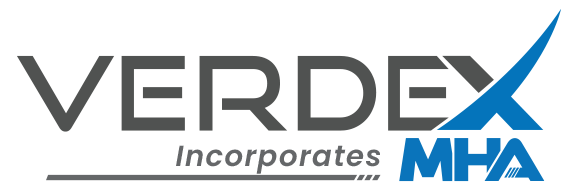
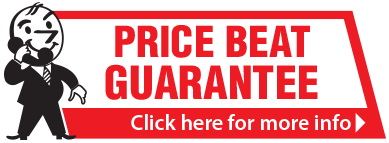























































































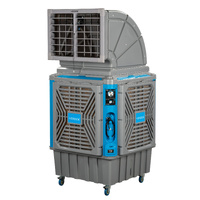

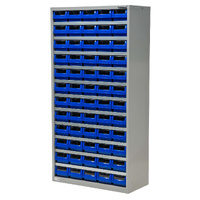




































 Trolleys & Hand Trucks
Trolleys & Hand Trucks Cage Trolleys
Cage Trolleys Cleaning Carts & Trolleys
Cleaning Carts & Trolleys Construction Trolleys
Construction Trolleys Custom Trolleys
Custom Trolleys Hand Trucks & Dollies
Hand Trucks & Dollies Laundry/Linen Trolleys
Laundry/Linen Trolleys Lifting Trolleys
Lifting Trolleys Order Picking Trolleys
Order Picking Trolleys Panel Cart Trolleys
Panel Cart Trolleys Platform Trolleys
Platform Trolleys Powered Trolleys
Powered Trolleys Shelf & Tiered Trolleys
Shelf & Tiered Trolleys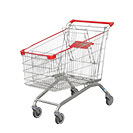 Shopping Trolleys
Shopping Trolleys Stainless Steel Trolleys
Stainless Steel Trolleys Tool Trolleys
Tool Trolleys Utility & Service Carts
Utility & Service Carts Lifting & Handling Equipment
Lifting & Handling Equipment Forklift Attachments
Forklift Attachments Jib Attachments
Jib Attachments Lifting Hoists & Pallet Hooks
Lifting Hoists & Pallet Hooks Load Skates & Tow Tugs
Load Skates & Tow Tugs Manual Stackers & Lifters
Manual Stackers & Lifters Pallet Jacks
Pallet Jacks Pallet Lifters
Pallet Lifters Pallet Rotators & Dispenser
Pallet Rotators & Dispenser Powered Pallet Trucks & Electric Lifters
Powered Pallet Trucks & Electric Lifters Scissor Lift Trolleys and Tables
Scissor Lift Trolleys and Tables Conveyor Equipment
Conveyor Equipment Conveyor Frames & Stands
Conveyor Frames & Stands Roller & Skate Conveyors
Roller & Skate Conveyors Ladders & Access Equipment
Ladders & Access Equipment Container & Yard Ramps
Container & Yard Ramps Ladders & Step Stools
Ladders & Step Stools Work Platforms & Crane Cages
Work Platforms & Crane Cages Drum Handling Equipment
Drum Handling Equipment Drum Storage & Bunding
Drum Storage & Bunding Drum Trolleys & Lifters
Drum Trolleys & Lifters Forklift Drum Handling
Forklift Drum Handling Waste Handling & Bins
Waste Handling & Bins Bin Lifters & Tippers
Bin Lifters & Tippers Plastic Waste & Wheelie Bins
Plastic Waste & Wheelie Bins Steel Waste & Tipping Bins
Steel Waste & Tipping Bins Waste Carts
Waste Carts Dangerous Goods Storage & Spillage
Dangerous Goods Storage & Spillage Aerosol Cans Storage Cages
Aerosol Cans Storage Cages Bunded Pallets & Storage
Bunded Pallets & Storage Corrosive Goods Storage Cabinets
Corrosive Goods Storage Cabinets DG Storage & Trolleys
DG Storage & Trolleys Flammable Liquid Cabinets
Flammable Liquid Cabinets Forklift Gas Storage Cages
Forklift Gas Storage Cages Site Storage
Site Storage Spill Kits
Spill Kits Shelving & Storage Equipment
Shelving & Storage Equipment Stillage & Transport Cages
Stillage & Transport Cages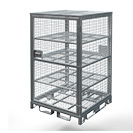 750 Series Cage Configurations
750 Series Cage Configurations Heavy Duty Cabinets
Heavy Duty Cabinets Heavy Duty Shelving
Heavy Duty Shelving Mega Bins & Pallets
Mega Bins & Pallets Packing & Workbenches
Packing & Workbenches Parts Trays & Stor-Pak Bins
Parts Trays & Stor-Pak Bins Pegboard & Louvre Panels
Pegboard & Louvre Panels Plastic Bins & Crates
Plastic Bins & Crates Plastic Handling Solutions Bins
Plastic Handling Solutions Bins Plastic Pallets
Plastic Pallets Stack & Nest Bins
Stack & Nest Bins Pallet Racking Accessories
Pallet Racking Accessories Workplace Equipment
Workplace Equipment Modular Workbenches
Modular Workbenches Electric Height-Adjustable Workbenches
Electric Height-Adjustable Workbenches Floor Matting
Floor Matting General Workplace Equipment
General Workplace Equipment Industrial Weighing Scales
Industrial Weighing Scales Packaging Machinery
Packaging Machinery Stationery Cupboards
Stationery Cupboards Storage and Stillage Cages
Storage and Stillage Cages Tool Trolleys
Tool Trolleys Tooling Cabinets
Tooling Cabinets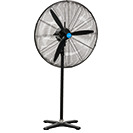 Workshop Fans and Coolers
Workshop Fans and Coolers Safety Barriers, PPE & Signage
Safety Barriers, PPE & Signage Barriers & Bollards
Barriers & Bollards First Aid Equipment
First Aid Equipment Gloves, Knives and PPE
Gloves, Knives and PPE Signage
Signage Cleaning & Site Supplies
Cleaning & Site Supplies Cleaning Equipment
Cleaning Equipment Cleaning Trolleys
Cleaning Trolleys Rubbish Bins
Rubbish Bins Signs & Traffic Supplies
Signs & Traffic Supplies Construction Equipment
Construction Equipment Construction Trolleys
Construction Trolleys Waste Handling
Waste Handling General Site Equipment
General Site Equipment Concrete Equipment
Concrete Equipment Site Storage
Site Storage Lifting Equipment
Lifting Equipment Verdex Specials
Verdex Specials









